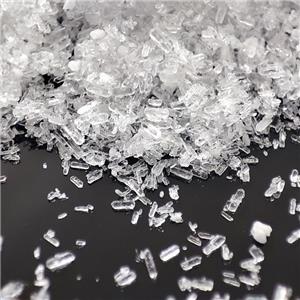Precautions for using talcum powder in water-based coatings
1. Selection of talc powder addition amount
Talc powder is added to waterborne wood coatings mainly to take advantage of its low cost, excellent filling and good sanding performance. However, the amount of talc powder added needs to be reasonably controlled.
Excessive addition of talc powder will lead to decreased adhesion of the coating. This is because waterborne coatings are usually single-component coatings, and their film curing mainly relies on physical changes. When the primer directly contacts the wood board, the paint film will form a structure similar to "paint nails" in the ducts or tiny grooves on the surface of the wood board. The adhesion of the coating depends largely on the depth of penetration of the film-forming substance into the surface of the substrate and the number of "paint nails" formed. Therefore, with the increase of fillers such as talc, the adhesion of the coating may decrease slightly.
When applying talc powder in waterborne wood coating, the type and amount of talc powder should be considered comprehensively. The right amount of talc powder can improve the hardness, filling, toughness and sanding of the paint film while reducing costs. However, if the amount added is too much (for example, when PVC>CPVC, the resin cannot completely wrap and wet the filler), it may lead to problems such as decreased adhesion of the paint film, cracking of the coating film, and decreased transmittance. Therefore, when selecting talc powder, experiments can be conducted based on the PVC.

2. Sedimentation problem
The sedimentation rate of the filler can be analyzed by the Stokes Formula:
Sedimentation rate formula: V = 2r²(ρ - ρ₁)g / 9n
V: particle sedimentation rate
r: particle radius
ρ: particle density
ρ₁: solvent density
n: liquid viscosity
g: gravity acceleration
From the formula, it can be seen that the higher the viscosity of the system, the smaller the particle density, and the smaller the particle size, the less likely the filler is to precipitate; conversely, the sedimentation rate is accelerated.
In coating applications, if it is found that the filler precipitates quickly, talc powder with higher fineness and lower density can be selected. At the same time, by adjusting the overall formula, appropriately increasing the viscosity of the coating system can also help slow down precipitation. In addition, the reasonable selection of dispersants and good dispersion processes also play an important role in inhibiting precipitation.
3. Flocculation problem
As an inorganic filler, talc powder has a large difference in physical structure and chemical form from organic polymer materials (such as emulsions), so the two have poor affinity. Talc powder is not dissolved in the paint, but dispersed in the system in the form of tiny particles. This characteristic easily leads to flocculation problems in the paint system.
In order to improve the interfacial bonding between talc powder and polymers, it is usually necessary to modify the surface of talc powder. Through surface modification, the dispersion uniformity, compatibility and stability of talc powder particles and polymers can be improved, thereby effectively reducing flocculation and improving the overall performance of the paint.




